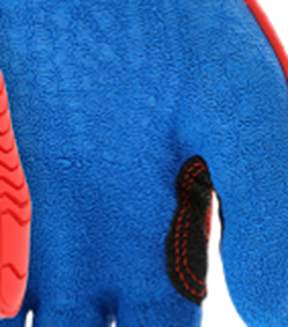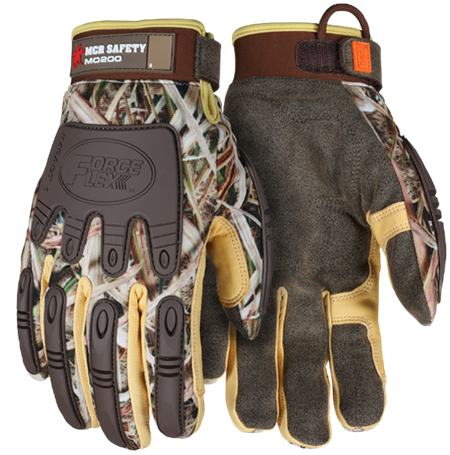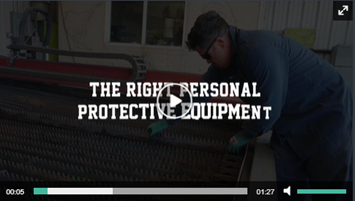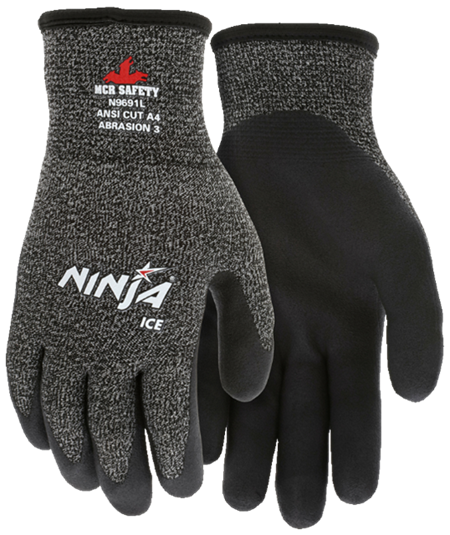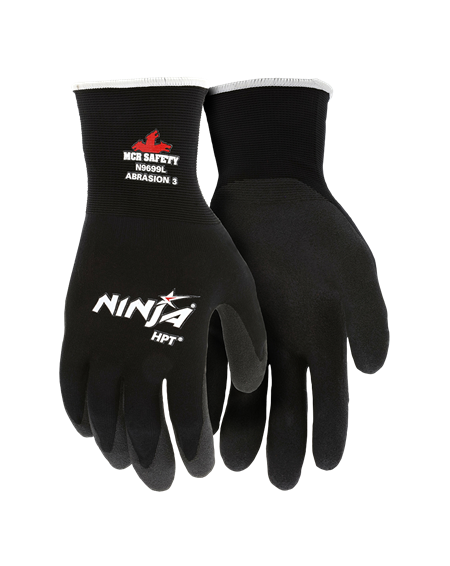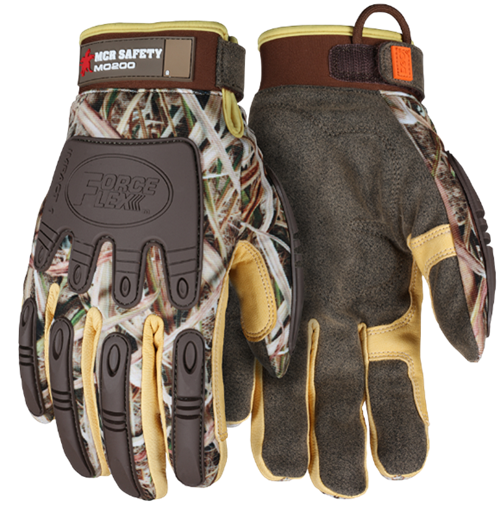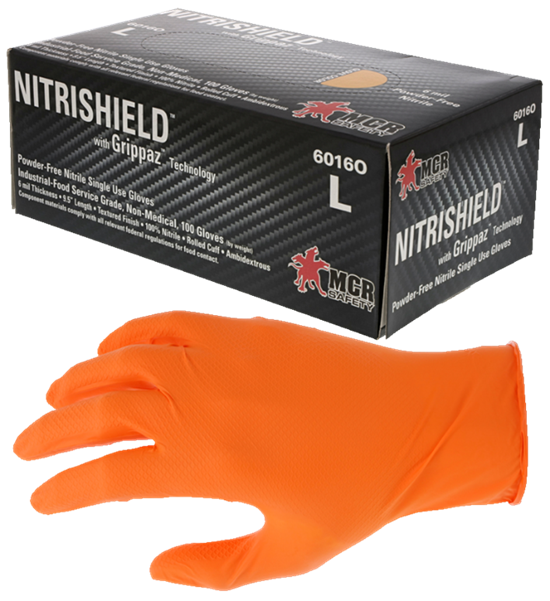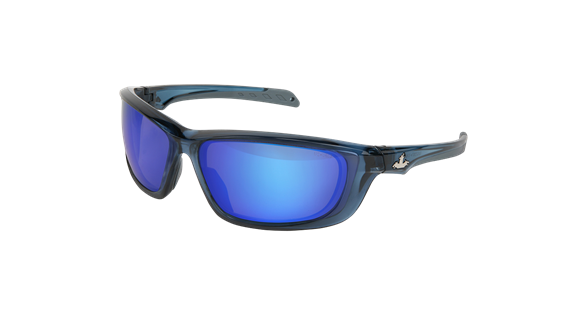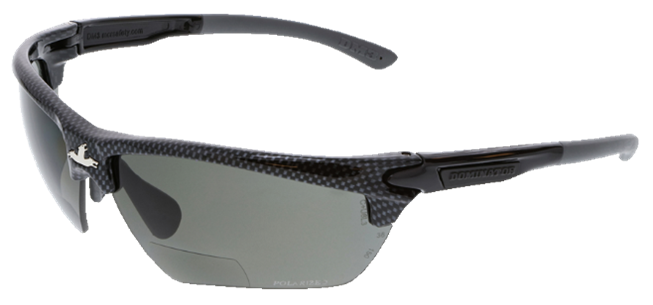15 Oct 10/15/2020
A Guide to Fishing Gloves and Fishing Glasses
Anglers probably won't think of gloves and safety glasses immediately when outfitting the ultimate fishing gear set. They've probably got their eye on rods, reels, spears, nets, traps, hooks, lines, sinkers, bait, lures, flies, and tackle boxes instead (maybe even boats, too).
However, a good pair of fishing gloves will keep your hands protected, even though you may have to get used to wearing them while you're fishing. The extra layer of protection on your hands can save them from line cuts, hook sticks, sun exposure, fish teeth, and sharp fins. They'll also help keep your hands dry during a day on the river, lake, or ocean.
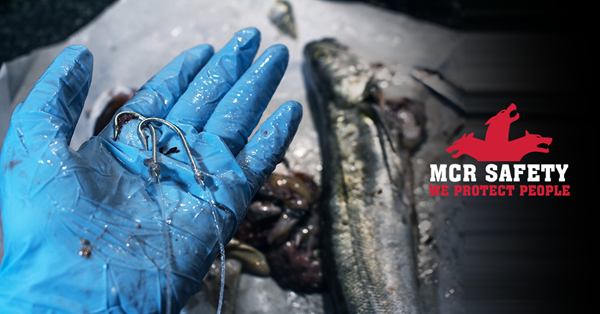
We understand many don't care for much about wearing gloves while fishing. However, you will want to be wearing PPE once those fish are reeled into the boat or on land. Anyone who has caught a large fish and has grabbed them barehanded knows how much damage the fish can cause to your hands and skin. All it takes is the slip of the fish, and the hook still attached to the fish can quickly penetrate the skin. And when you're cleaning, skinning, and filleting the fish you catch, you will need gloves with a good grip, puncture resistance, and cut resistance.
This article will highlight some of the personal protective equipment you need when fishing, especially gloves and sunglasses.
What Make Good Fishing Gloves?
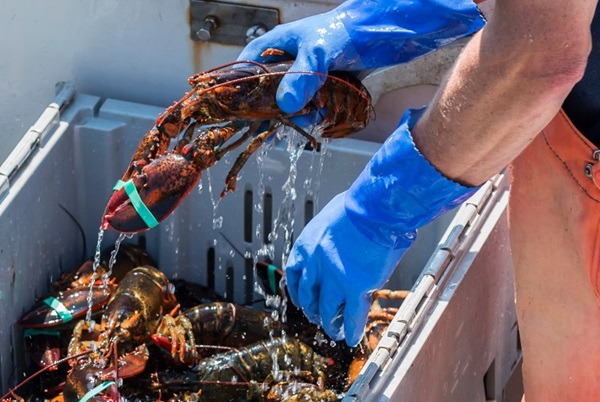
Suppose you prefer not to touch your catch directly, not to worry. The right set of fishing gloves will usually be waterproof, comfortable, and made of tough, abrasion-resistant material that protects against tears, snags, and punctures from sharp fishing gear or the catch itself.
This is not to say that any pair of work gloves wouldn't be suitable for use as fishing gloves. However, the high-quality, durable fabric of a good fishing glove should be thick enough to provide warmth if fishing in cold weather and shield your hands from wind and sun elements. Yet, it also should give your hands and fingers the full range of motion and dexterity needed to handle both tackle and fish properly.
You will also want to consider your fishing environment. Are you fishing in warm weather, or are you cold-weather angling? The last thing you want to do is purchase PPE that will never be used because it's not designed for what you're doing or the environment you're doing it in.
The right cutting-edge design and fabric technology may also help you be a better fisherman. At a minimum, slippery fish won't fall back into the water once they're in your net if you're wearing a pair of fishing gloves with good grip performance.
Common Fishing Injuries and Fish Handling Safety
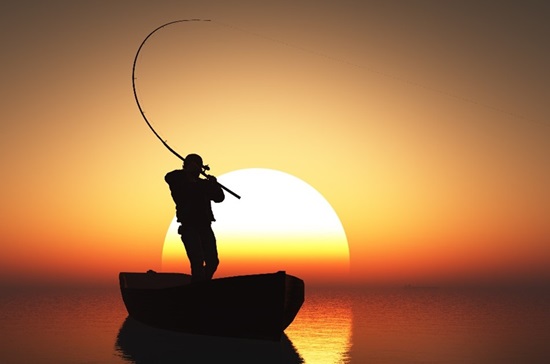
Some of the most underestimated hazards for those who fish are the potential for personal injury, disease, and secondary infections from handling fish. In addition to the disease-causing organisms that fishermen can come into contact with, there are concerns for punctures, cuts, or abrasion injuries from fish spines, gill rakers, teeth, and opercula.
The hard-working hands are as essential to a good catch as any tackle, tool, or fishing boat. In addition to sun and wind damage, your hands need protection from common injuries related to fishing and the handling of fish.
Here are just a few to keep in mind.
Fish Hook Injuries

The ubiquitous injury for any fisherman is getting a fish hook stuck in your skin. Because of the curved sharpness, sometimes with a barb near the hook's tip, most fishhook injuries are puncture wounds of the skin on the hands, fingers, face, ears, scalp, back, arms, or legs.
The main concern with puncture wounds is infection. The wound area is often dirty from marine bacteria, which increases the chance of infection that can cause redness, swelling, or pus to build up. If a fish hook puncture is deep enough, it can damage muscles, tendons, ligaments, bones, blood vessels, or nerves, causing numbness or tingling; pale, white, blue, or cold skin; or the inability to move.
Once a fish hook pierces the skin, it is bound to bleed. Sometimes the bleeding is severe and can't be easily stopped. It's essential to clean the wound immediately to avoid infection. Wearing gloves and other PPE while fishing can help you avoid these severe and potentially deadly injuries.
And, as we highlighted above, hooks can affect your eyes too…
We will cover over polarized fishing safety glasses in an upcoming section! We'll get to those after our glove section.
Fish Bites and Fin Cuts
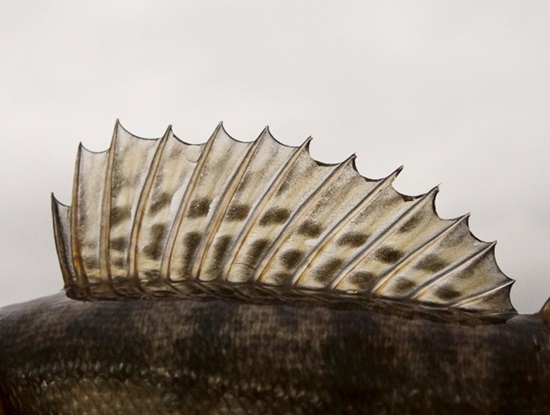
Handling a fish out of water is not that easy. Fish are notorious for being good actors, hell-bent on revenge if you get close enough. A fish's scales and fins are meant to protect against danger, whether from humans or marine life. As a result, scales and fins can act like knife blades, cutting you to the quick if you get too close.
To protect yourself from these threats, choose to wear appropriate gloves that can help prevent bites, punctures, and cuts.
Fish Handler's Disease
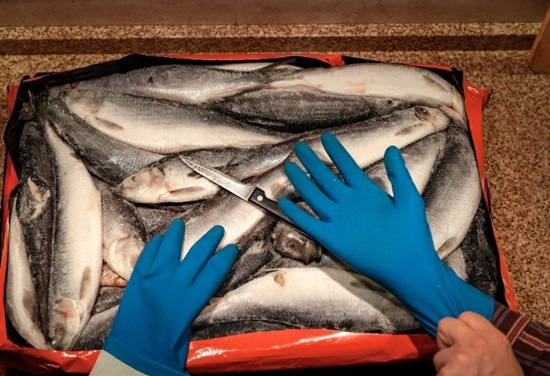
Fish-handler's disease is not just the stuff of fishing lore. Handling fish often creates small cuts and scrapes in the skin of anglers. Mycobacteriosis, or fish handler's disease, is a skin infection caused by skin injuries from handling fish becoming infected with the bacteria Erysipelothrix rhusiopathia. If left untreated, a victim of fish handler's disease can experience arthritis-like symptoms, leading to more severe problems, including swollen lymph glands, gangrene, and lung issues.
Things To Consider When Buying Fishing Gloves

In addition to the usual suspects when it comes to buying gloves, such as style, fit, durability, and protection from the elements, anglers have a few other considerations to take into account.

First Major Consideration - Full Gloves or Fingerless Gloves?
The first significant thing to consider is whether you want a full glove design or one with open fingers. There are pros and cons to each:
- Full gloves - are great for fishing in frigid weather with temperatures in the single digits and winds that freeze in an instant. You want the best insulation possible for these conditions, such as a waterproof bladder and Thinsulate™ lining. Full coverage means no cold weather or water can reach your skin, and your hands are fully protected. However, they do limit the sense of touch and dexterity to some degree.

Full Gloves
- Fingerless gloves - are more lightweight and offer protection for your hand and palm while giving your fingers full movement and dexterity for tying knots and feeling the fishing line. Fingerless gloves will provide UV protection for your hands, too, though your fingers are left exposed.
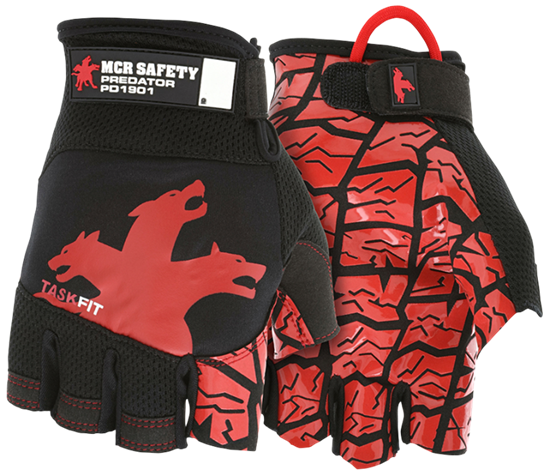
Fingerless Gloves

Second Major Consideration - Important Glove Features
After deciding on the design, then you have to pay attention to the features. Here are some important features to consider:
- Enhanced Grip – As a fisherman, look for a grip pattern on the palm that can help with holding onto your catch or tackle.
UT1951 is highlighted below, and its latex crinkle finish provides excellent gripping power.
- Waterproofing and Windblocking - Waterproof fishing gloves allow your hands to be underwater and remain dry—when you are releasing a fish, for instance, or wrestling to bring a big catch onboard. The wind-blocking feature is mostly for fly fishing and angling in colder temperatures to help protect hands from frigid winds or winter weather.
MO200 is windproof and waterproof.
- Reinforced Areas- The casting area of the glove, must withstand constant abrasion over time, hence the need for overlays and reinforcement, especially in the palm.
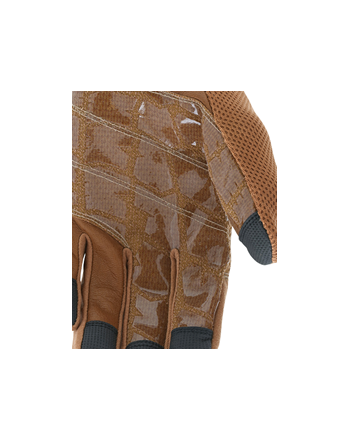
The 962 is made with super-stretch fabric, and its palm is reinforced with rough DuPont™ Kevlar®
- Cut Resistance - Incorrect handling of fish or handling fish with sharp or spiny teeth or fins can cut up your hands. Wearing gloves that offer cut resistance is necessary. Check out our video on MCR Safety Cut Pro products.
MCR Safety Glove Styles

Reinforcements and Latex Grip
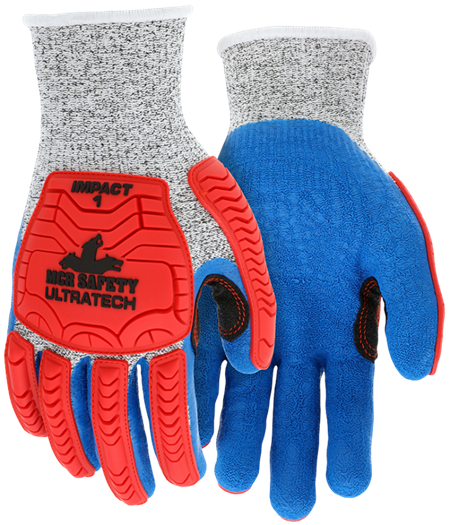
MCR Safety's UT1951 – When handling fish, using a rubberized glove can help maintain your grip on a fish's protective slimy coating. These UltraTech®-coated knit gloves feature a 13-gauge HyperMax™ shell, a reinforced thumb, and a blue, textured, latex-coated padded palm and fingers for gripping power that also provides abrasion and puncture resistance. The exclusive back-of-hand TPR design offers excellent coverage and ANSI Impact Level 1 protection.
Reinforced Grip and Stretch Material
MCR Safety's 962 – Anglers need excellent grip in their fishing gloves, and these have a silicone tire tread pattern and MAXGRID™ fingertips to provide just that. The TaskFit design, super-stretch knuckle area, and adjustable wrist closure allow for greater flexibility. The reinforced index finger and thumb crotch provide excellent durability in these extremely high-stress areas.
Cut Resistance and Water Repelling Technology
MCR Safety's N9691 – Ninja® gloves are engineered for the kind of finger dexterity and sense of touch that fishermen need. The Ninja® Ice N9691 insulated glove features a 15-gauge nylon/glass cut- and puncture-resistant shell. The palm and fingertips are coated with Hydropellent Technology® that repels liquids and aids in handling slippery fish.
Extreme Cut Resistance and Puncture Resistance Protection
MCR Safety's 92735 – With a top-of-the-chart ANSI cut A9 score, and ANSI puncture level 5, these gloves offer superior protection from fillet knife cuts, fish teeth, gill plates, and minor nicks from hooks or other sharp objects. The reinforced thumb crotch also provides extended use in a high-stress area.
Cut Resistance, Puncture Resistance, and Waterproof
MCR Safety's MG9645 – These gloves feature a synthetic shell that provides both cut and puncture resistance. Their 12-inch gauntlet cuffs offer protection beyond the wrist, and the sandy finish offers excellent dexterity and grip in a waterproof glove.
Water Resistant Shell and Water Repellant Coating
MCR Safety's N9699 – These gloves are an excellent choice for handling fish with the dexterity of their breathable, ultra-lightweight nylon shell. Plus, the coating repels water, keeping hands dry even when holding wet gear.
Waterproof
MCR Safety's MO200 – When fishing in the winter months, these gloves can help protect your hands from the elements.Fully insulated with 100-gram Thinsulate™ and a water/windproof bladder, the MO200 ForceFlex® gloves also feature a tough synthetic palm that scores a high level-four abrasion rating when tested to the ANSI 105 standard.
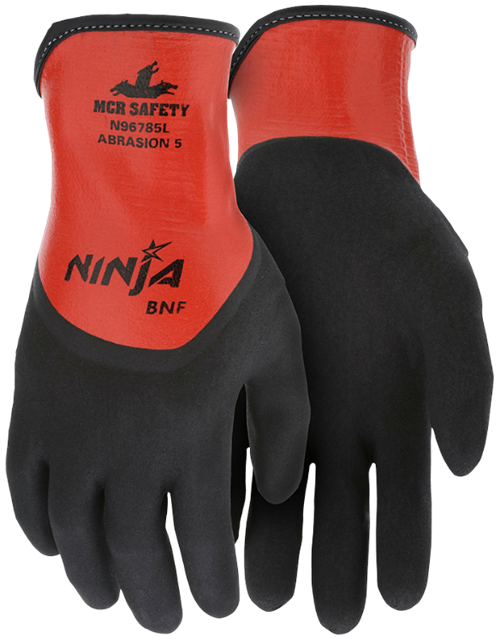
MCR Safety's N96785 – An excellent waterproof option for anglers, these gloves feature Ninja® breathable nitrile foam coating for exceptional abrasion resistance and unparalleled grip performance. The double-layer coating on the N96785 provides outstanding durability and creates a waterproof barrier.
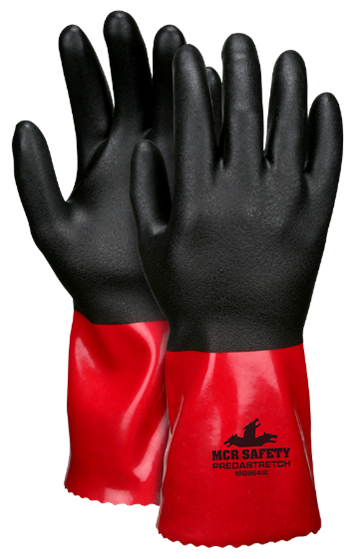
MCR Safety's MG9648 – Comfortable and easy to wear, the PredaStretch™ MG9648 features a PVC/nitrile bi-polymer double-dip, providing excellent dexterity and grip for even the slickest of fish. The the12-inch gauntlet cuff offers extended protection, too.
Fingerless
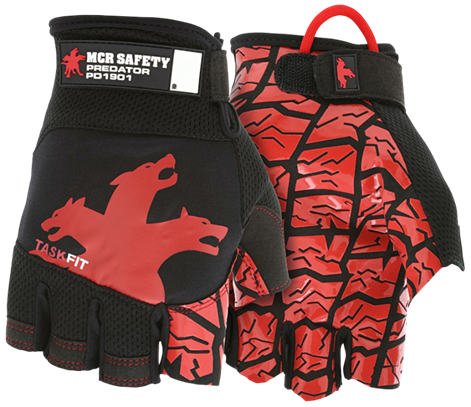
MCR Safety's PD1901 – In warmer weather, the Predator®-powered tire-tread silicone fingerless gloves are ideal, especially since they offer excellent grip. A more lightweight glove, they provide hand protection while not hindering your dexterity at all.
Disposable Fish Handling Grip
MCR Safety's Grippaz™ Disposables – Not everyone is seeking to invest in multi-use gloves. For those looking for disposable gloves, consider buying those that come with a fish scale grip design.
Cold-Weather Ice Fishing
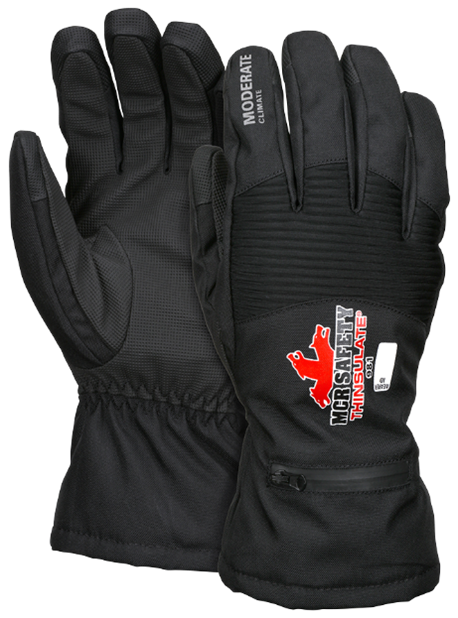
In cold weather, insulated fishing gloves help your hands stay warm and dry during long days on the ice, even when the wind is blowing, and the temperatures drop. MCR Safety's Thinsulate™ Insulated Gloves—981, 982, and 983—all feature top-technology Thinsulate™ insulation.
Polarized Fishing Glasses
Your skin isn't the only part of your body facing hazards while fishing. Sharp hooks are a danger to eyes as well. Consider protecting your eyes from sharp hooks, bright sunlight, and glare off the water with polarized fishing safety glasses!
Polarized glasses are great for protecting your eyes from the sun's glare and its reflection off the water. They can also protect your eyes from flying fish hooks that may pop up if the big one gets away or you are in close quarters with a partner who is casting into the water.
Safety magnifiers can keep you safe while fishing while also allowing you to read the nautical charts. The above image shows our DM3H15GZDC.
You can find all of our polarized sunglasses here: https://www.mcrsafety.com/glasses/polarized.
Common Questions

How do I determine the right size of fishing gloves?
- You'll need a measuring tape or a string and a ruler. For those using a measuring tape, wrap it around your hand in the same manner, and the number in inches is your glove size. Consult our handy Glove Size Chart to determine what size gloves to order based on your measurement.
What gloves do the fishing pros wear?
- A fishing pro's decision on gloves depends on the environment they're fishing in and the type of hand protection they require. We've highlighted some of the most frequent glove solutions that fishermen need above.
What are the best cold-weather fishing gloves?
- MCR Safety's Insulated Mechanics Gloves 981, 982, and 983 featured above are our most popular winter gloves.
MCR Safety Protects People, At Work and While Fishing
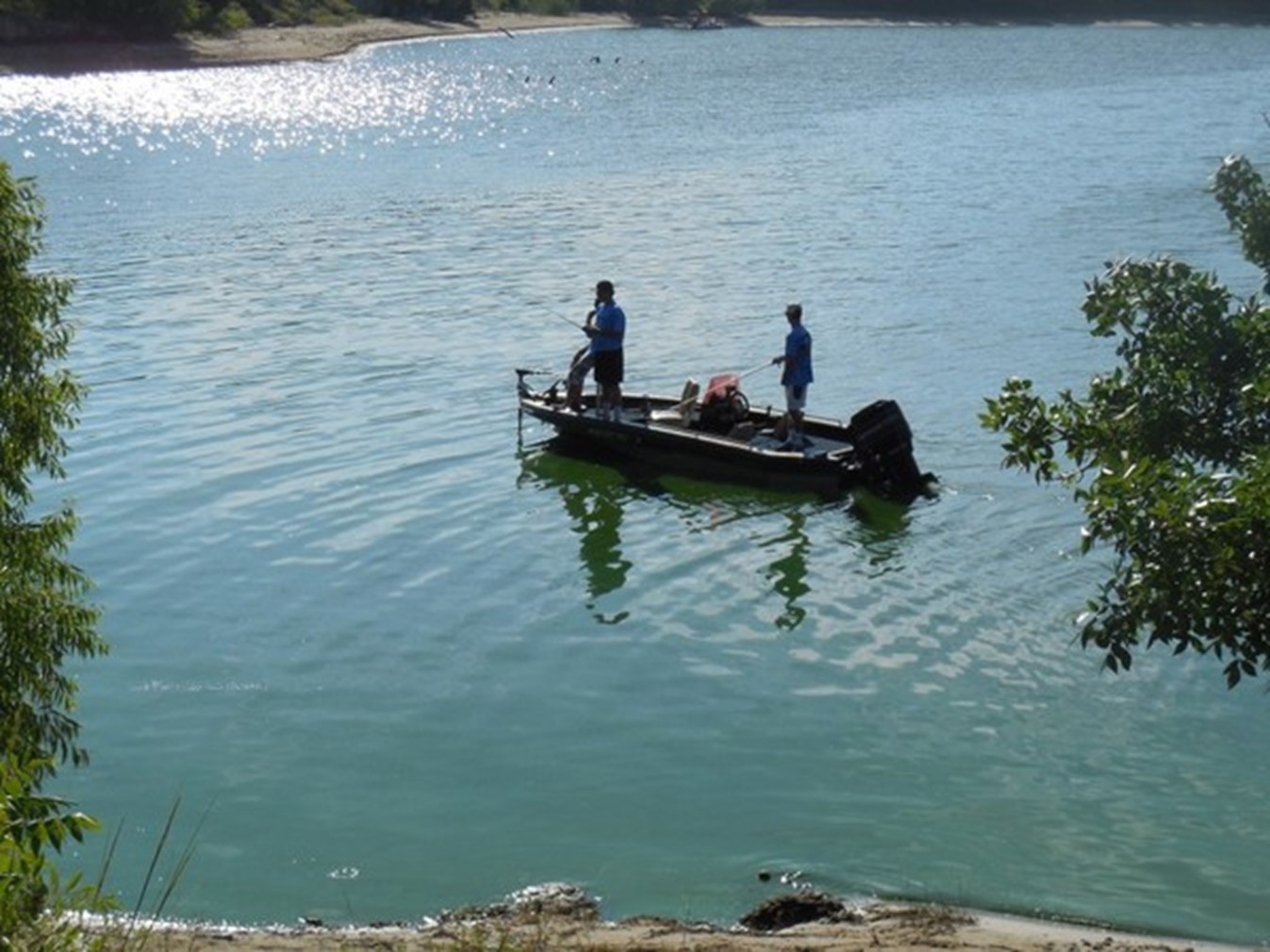
Our gloves are primarily designed for industrial applications; however, who is to say they can't be used for recreational activities, too?
At MCR Safety, you'll find all kinds of high-quality gloves in our lineup. We have waterproof designs, tough styles with abrasion-resistant material, puncture- and cut-resistant options, some with excellent insulation, and others with grip and dexterity in mind. Simply put, we've got gloves that are designed to protect you!
So, what are you waiting on? Let's get your fishing gloves ordered through one of our online distributors!
We welcome any comments, feedback, or suggestions for how we can best protect people at work.
For over 45 years, MCR Safety has proven to be a world leader in gloves, glasses, and garments. Whether it’s on the shop floor, an oil rig, or a construction site, we are there providing solutions to workplace hazards. It’s all part of our commitment to protect people.
No matter your industry, we have the personal protective equipment you need.

Learn more about MCR Safety by checking out our most recent video. For more information, browse our website, request a catalog, find a distributor, or give us a call at 800-955-6887.
About the Author
Related Articles

A Quick Review of Thinsulate™ Gloves
When workers head outside in cold weather, they know they're likely to face challenging working...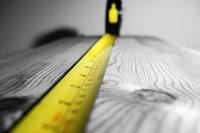
Hand Size Measuring Solutions and Glove Size Chart |
If you are unsure about your hand size, you'll need to perform some calculations to determine...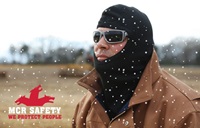
Types of Face Protection: Balaclavas, Neck Gaiters, and Masks
Many industries may not face hazards that cause direct face injuries. However, most all will have...Latest Articles





